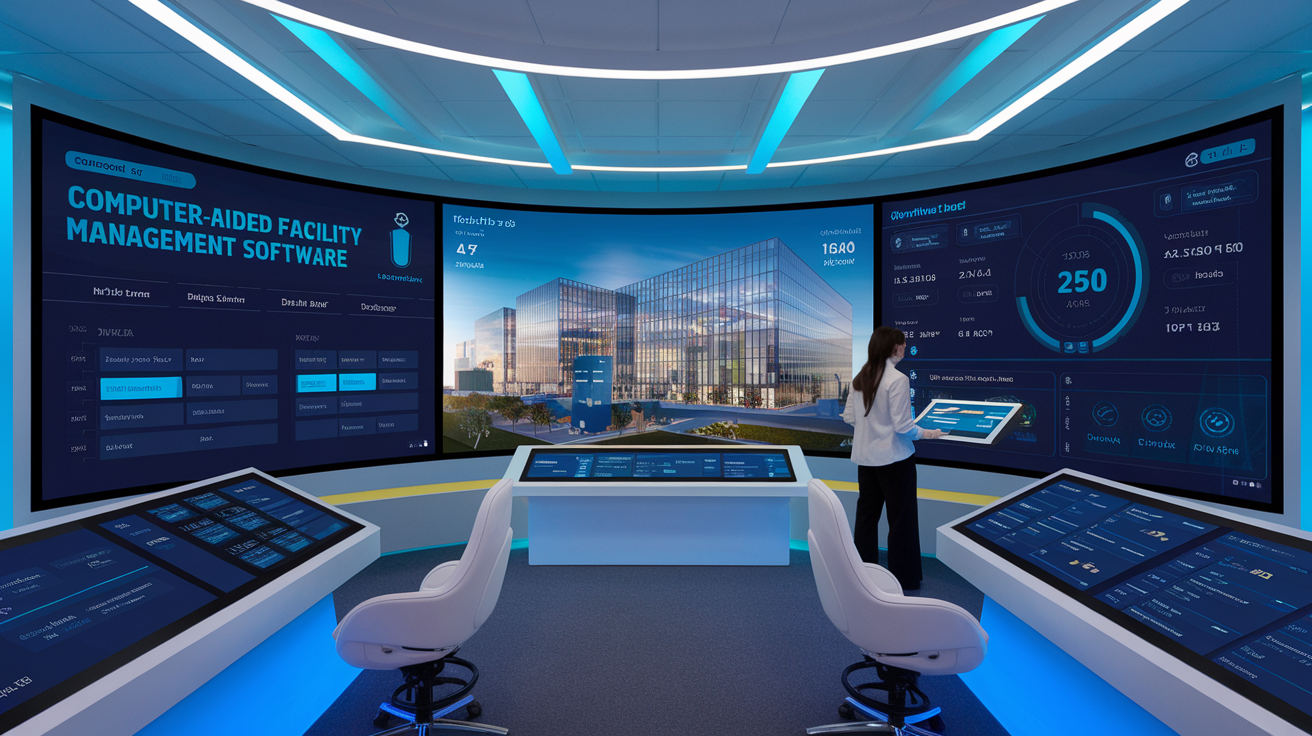Facility management is crucial to the effective running of buildings and infrastructure. With the advancement of technology, traditional facility management methods have evolved into complex systems known as Computer-Aided Facility Management (CAFM) software. This article discusses CAFM software, its features, benefits, and how it transforms facility management.

What is Computer-Aided Facility Management Software?
CAFM software is a technical solution that helps facility managers plan, manage, and optimize the utilization of their facilities and resources. It blends facility management principles with the power of computer systems to create a single platform for managing assets, space, maintenance, and operations.
Key Features of CAFM Software
- Space Management
CAFM software helps optimize the use of available space by providing tools to analyze occupancy, allocate space effectively, and plan future requirements. - Asset Management
Track, manage, and maintain all assets within a facility, including equipment, furniture, and machinery, ensuring their efficient use and longevity. - Maintenance Management
Automate maintenance schedules, monitor equipment performance, and reduce downtime with preventive and predictive maintenance features. - Work Order Management
Streamline the creation, assignment, and tracking of work orders to ensure timely resolution of facility issues. - Reporting and Analytics
Generate detailed reports and insights on various aspects of facility management, aiding in data-driven decision-making. - Integration Capabilities
Integrate with other software systems, such as Building Management Systems (BMS) and Enterprise Resource Planning (ERP), for seamless operations.
Benefits of CAFM Software
- Improved Efficiency
By automating routine tasks and centralizing data, CAFM software enhances operational efficiency, allowing managers to focus on strategic tasks. - Cost Savings
Optimize resource allocation, reduce maintenance costs, and prevent unnecessary expenditures through better planning and oversight. - Enhanced Space Utilization
CAFM software provides insights into space usage, helping organizations maximize their workspace potential. - Compliance and Safety
Ensure compliance with regulatory requirements and improve safety by maintaining accurate records and automating compliance checks. - Scalability
CAFM solutions are scalable, making them suitable for small businesses as well as large enterprises with extensive facilities.
Claim Your Free Trial – https://axonator.com/request-for-demo/
Use Cases of CAFM Software
- Corporate Offices
Manage office spaces, track employee seating, and optimize workspace layouts. - Healthcare Facilities
Ensure the availability and maintenance of critical medical equipment while complying with health and safety regulations. - Educational Institutions
Manage classrooms, laboratories, and campus facilities efficiently. - Retail and Hospitality
Optimize retail spaces, track inventory, and ensure the maintenance of guest facilities. - Manufacturing Plants
Monitor equipment performance, schedule maintenance, and maintain safety compliance in industrial settings.
Choosing the Right CAFM Software
When selecting CAFM software, consider factors such as:
- Ease of use and user interface
- Customization and scalability
- Integration with existing systems
- Vendor reputation and support services
- Cost and return on investment
Computer-Aided Facility Management software is a game changer in modern facility management. It not only streamlines operations, but also provides data-driven insights to boost efficiency, cut costs, and maintain compliance. As enterprises develop and adapt, CAFM software will continue to be an essential tool for properly managing facility complexities.
By integrating CAFM technology, facility managers may increase productivity and create a sustainable, well-managed environment for all stakeholders.
